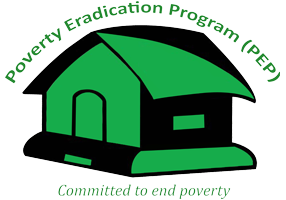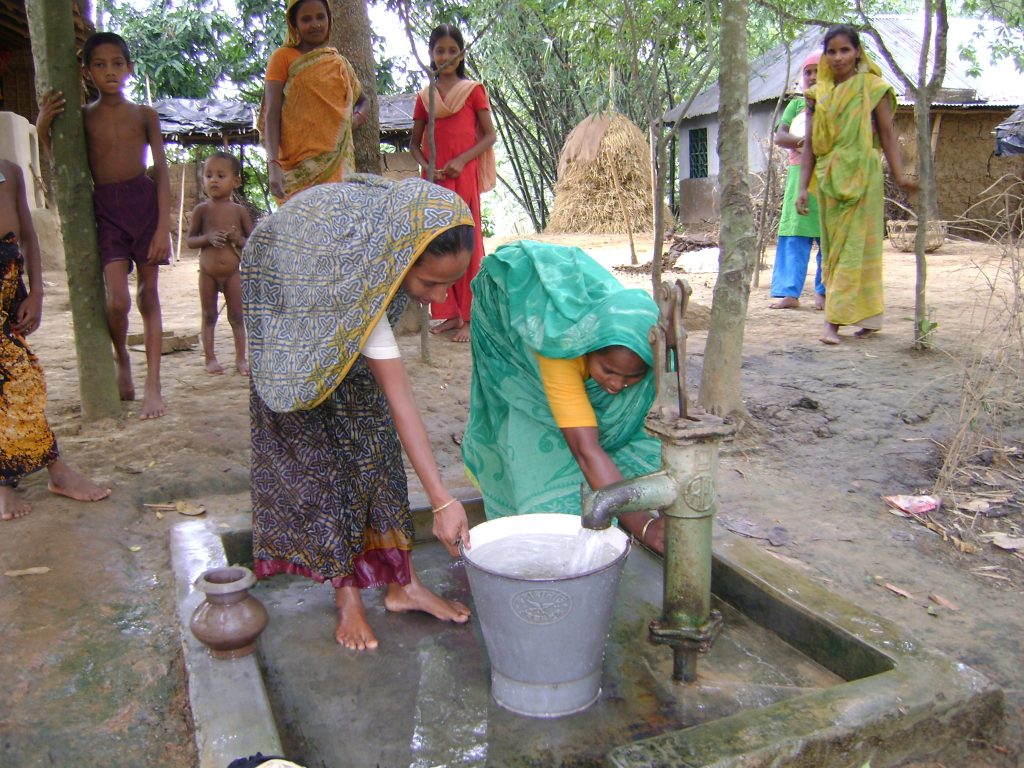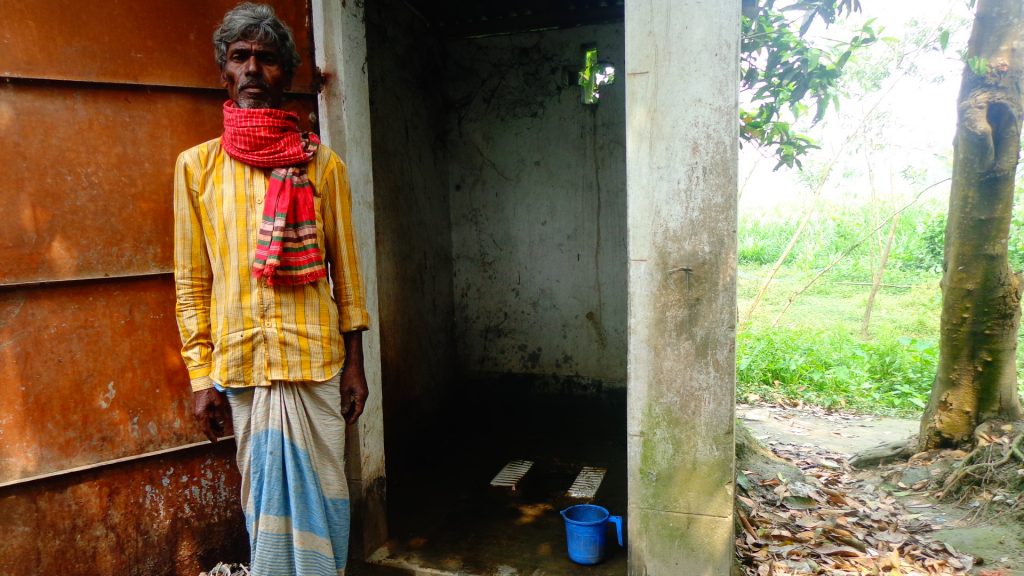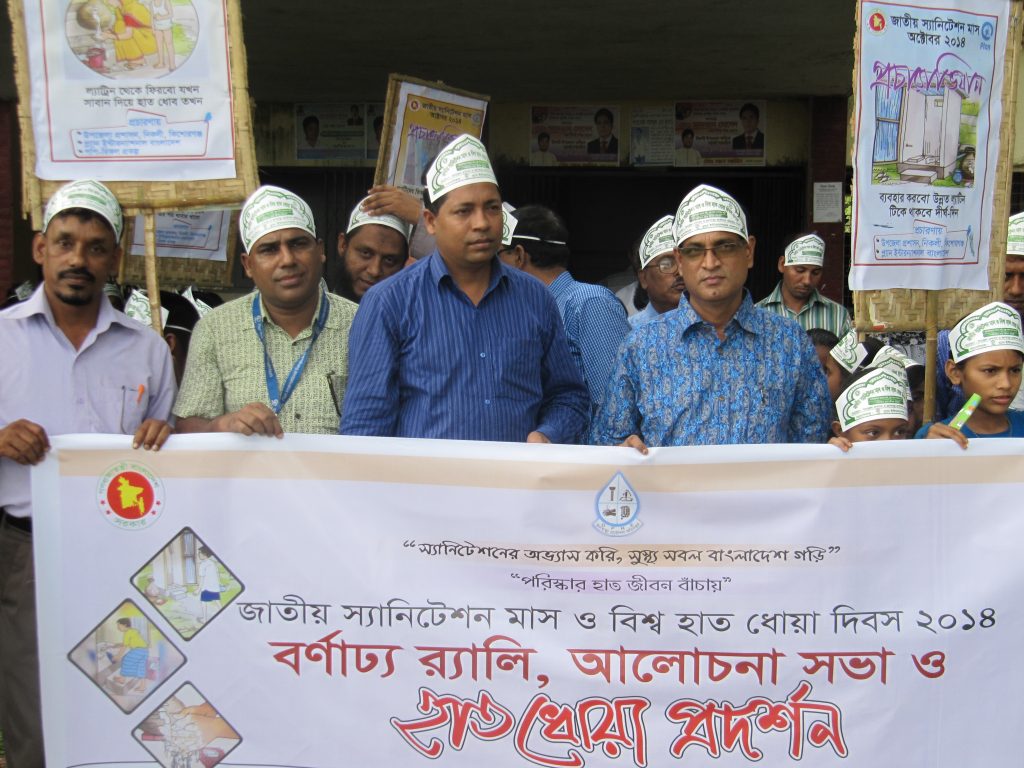In rural Bangladesh, many people do not have tubewells and take their drinking water from contaminated sources like wells, ponds, or rivers. This invites serious water-borne diseases. If attacked with such diseases, the poor partners require money to pay for medication. Consequently, ensuring access to safe drinking water must be a part of any integrated development strategy, as it reduces the incidence of illness and disease among the development partners and is more cost-effective in the long run.
PEP began production and distribution of sanitary latrines in 1989, and its sanitation program differs from that of many other NGOs. For the improved health and safety of the local population, PEP’s field workers always ensure that every latrine is located at least 75 feet away from any source of drinking water. Without a properly planned sanitation system, the distance of tube wells from latrines or sewage-contaminated ponds may be insufficient to avoid contaminating the well water. In most cases, pure water can be reached by digging a small diameter well. 75-150 feet deep, but in other areas, levels of arsenic in the water cause great hardship, long-term illness and suffering for those who have no choice but to drink it. These areas require more expensive wells dug to 700-800 feet to bypass the arsenic.
Household sanitary latrines are an essential need for the extreme poor, but beyond their means.
- 2,124 tube wells and 418 arsenic-free deep wells were installed since 1989, serving 25,000 families.
- 40,989 sanitary latrines were provided to the poorest families.
Program Costs
- Ordinary tube well with platform $160.00
- Arsenic-free deep well with platform $720.00
- Household sanitary latrine $25.00






